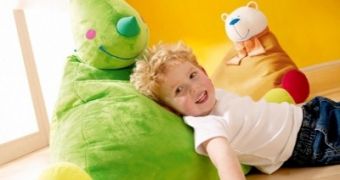Diagnosing autism is a challenging task for doctors, which is precisely why the average age for the discovery of the disease is about 3 years for children in the Untied States. These statistics are very concerning, as the affliction can be better treated if it's discovered early or even before it sets in. Recognizing early signs of autism is very difficult, and the possibility of misinterpreting those signs is always present.
But now, scientists believe they might have come up with a way of detecting the terrible disease by the time children turn 2. Their method doesn't involve fancy, hi-tech equipment, or expensive tests, but rather a more "soft" approach. Researchers at University of California – Davis (UCD) M.I.N.D. Institute found that children who later developpped autism exhibited strange behaviors in their relations with their toys, in that they were more likely to perform repetitive motions and to stare at them for long periods of time.
"The finding that the unusual use of toys is also present early in life means that this behavior could easily be added to a parent check-list or quickly assessed during a visit to a pediatrician's office," explained first study author Sally Ozonoff. "We found that these behaviors were relatively rare in the contrast group, but very high in the group who later developed autism."
Children's fascination with toys has been a subject of many scientific studies throughout the history of research, as they usually yield surprising results. Such was the case with the current survey, published in the journal of the National Autistic Society, Autism. By carefully watching the actions of children in high autism-risk groups, researchers were able to identify "trademarks" that foretold the onset of the disease.
"The earlier you treat a child for autism, the more of an impact you can have on that child's future," said Ozonoff. "We will also want to check that we find the same results in a random community sample. We [want] to directly test whether or not repetitive behaviors so characteristic of autism might actually be apparent earlier and therefore useful in early diagnosis."

 14 DAY TRIAL //
14 DAY TRIAL //